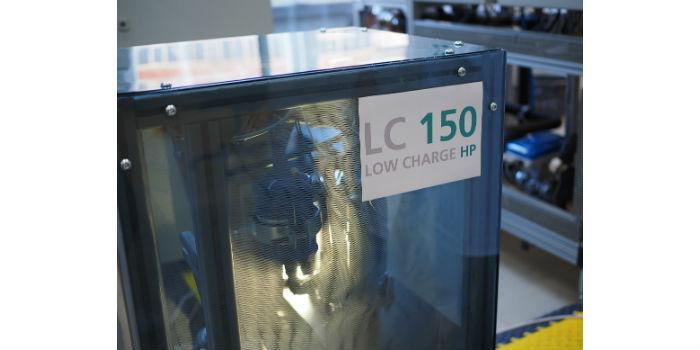 International. Fraunhofer ISE researchers have developed a climate-friendly heat pump alternative, which uses propane. The greenhouse gas potential is about 500 times lower than conventional refrigerants and therefore extremely low.
International. Fraunhofer ISE researchers have developed a climate-friendly heat pump alternative, which uses propane. The greenhouse gas potential is about 500 times lower than conventional refrigerants and therefore extremely low.
Another advantage is that the new saltwater prototype requires only a quarter of the coolant compared to conventional heat pumps available on the market with the same power. A propane heat pump based on this development would be the first of its kind in Germany to be allowed in indoor spaces of residential buildings without implementing additional security measures.
This new technology will now be improved. For the heat pump industry, new refrigerants are especially important: from 1 January 2020, the first bans on harmful refrigerants will come into force in the European Union.
Indoor propane heat pumps, practically non-existent on the market
Heat pump manufacturers and institutes are frantically looking for alternatives to conventional refrigerants. The first advances have been made, but most of the new alternatives are poisonous or flammable and therefore belong to safety groups that must meet stricter requirements. This makes the systems more expensive. The GWP value of propane is 3. As a refrigerant, it is climate friendly, relatively inexpensive, available worldwide and leads to high coefficients of performance.
However, due to its flammability, the safety standards for its use as a heat pump refrigerant, also known by the name of R290, are quite elaborate. A heat pump in a single-family home ranges from five to ten kilowatts of power. If the prescribed upper limit of 150 grams of refrigerant is exceeded, the heat pump can only be installed by implementing extensive and expensive safety requirements. Because of this, propane heat pumps that can be installed inside the building are almost non-existent on the market.
Research at Fraunhofer ISE could open up the market
The newly developed prototype at Fraunhofer ISE with the working name LC150 could change this. With 150 grams of propane, the heat pump reaches eight kilowatts of heating power. At this value, the unit can be installed inside the building without implementing additional safety requirements. Each kilowatt requires about 20 grams of propane. For comparison, systems available on the market currently have 80 to 90 grams of refrigerant per kilowatt of power, so that with around two kilowatts, the upper limit of 150 grams is exceeded. Therefore, most heat pump manufacturers currently offer propane heat pumps exclusively for outdoor installation.
"The goal of our work is to develop a heat pump that uses a climate-friendly refrigerant while at the same time achieving high power and efficiency with as little refrigerant as possible," says Dr. Lena Schnabel, head of the Heating and Cooling Technology department at Fraunhofer ISE. "The first step has been taken. The prototype reached the power level envisaged for this market segment with a very low refrigerant charge, bringing the vision of an indoor installation closer to reality." Now the researchers of the Schnabel department want to optimize the system and attract industry partners for a wide implementation of the technology in the German and European market. Increasing efficiency and developing a design for series production are at the top of the list. Finally, a compact and cost-effective system will be created that is also standardized and meets the different national safety standards.
Asymmetric plate heat exchanger as a success factor
Fraunhofer ISE researchers used components that were commercially available to build the prototype. A fundamental element behind the concept is the use of asymmetrical plate heat exchangers. As most of the refrigerant is found in the heat exchangers and the heat pump piping system, the optimization of the heat exchanger has a great effect on the reduction of the used refrigerant. Due to its design, the asymmetric heat exchanger does not require as much refrigerant.
Researchers could greatly reduce the demand for refrigerant as well by decreasing the amount of oil in the compressor. The system has been extensively analyzed in experiments. The operating variables were variation in source and sump temperatures, compressor speed, refrigerant load, amount of oil in the compressor and overheating.
Source: Fraunhofer ISE.














